
Feel free to add tags, names, dates or anything you are looking for
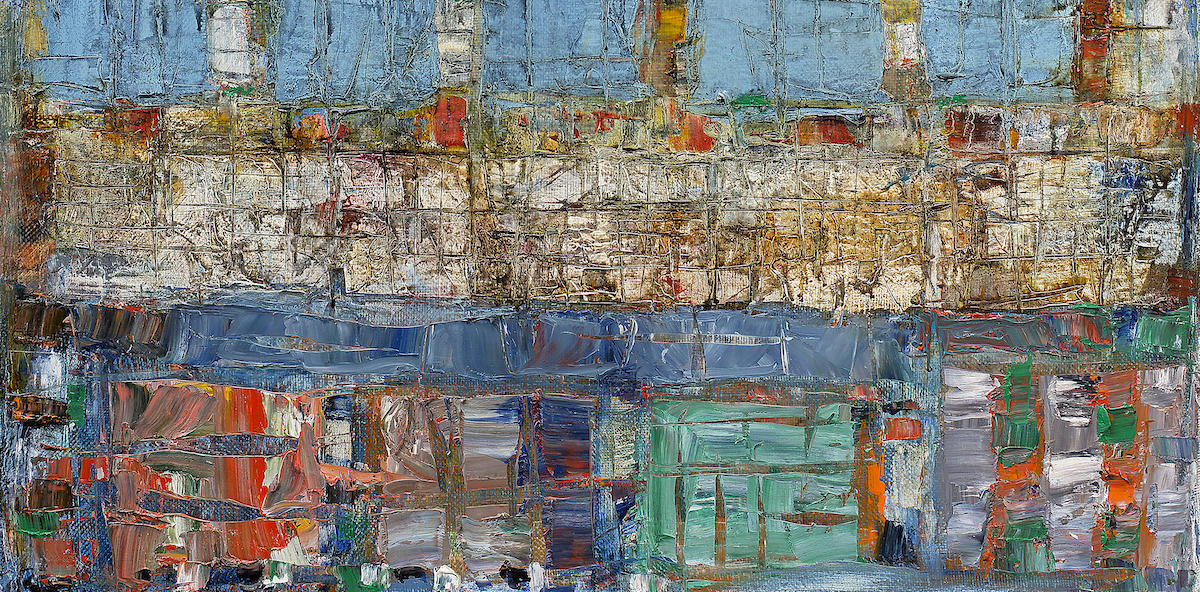

“[…] the composition of each epoch depends upon the way the frequented roads are frequented, people remain the same, the way their roads are frequented is what changes from one century to another and it is that that makes the composition that is before the eyes of every one of that generation and it is that that makes the composition that a creator creates,” – wrote Gertrude Stein in her book Picasso (Stein, Gertrude, Picasso, New York, Dover, 1984, 11).
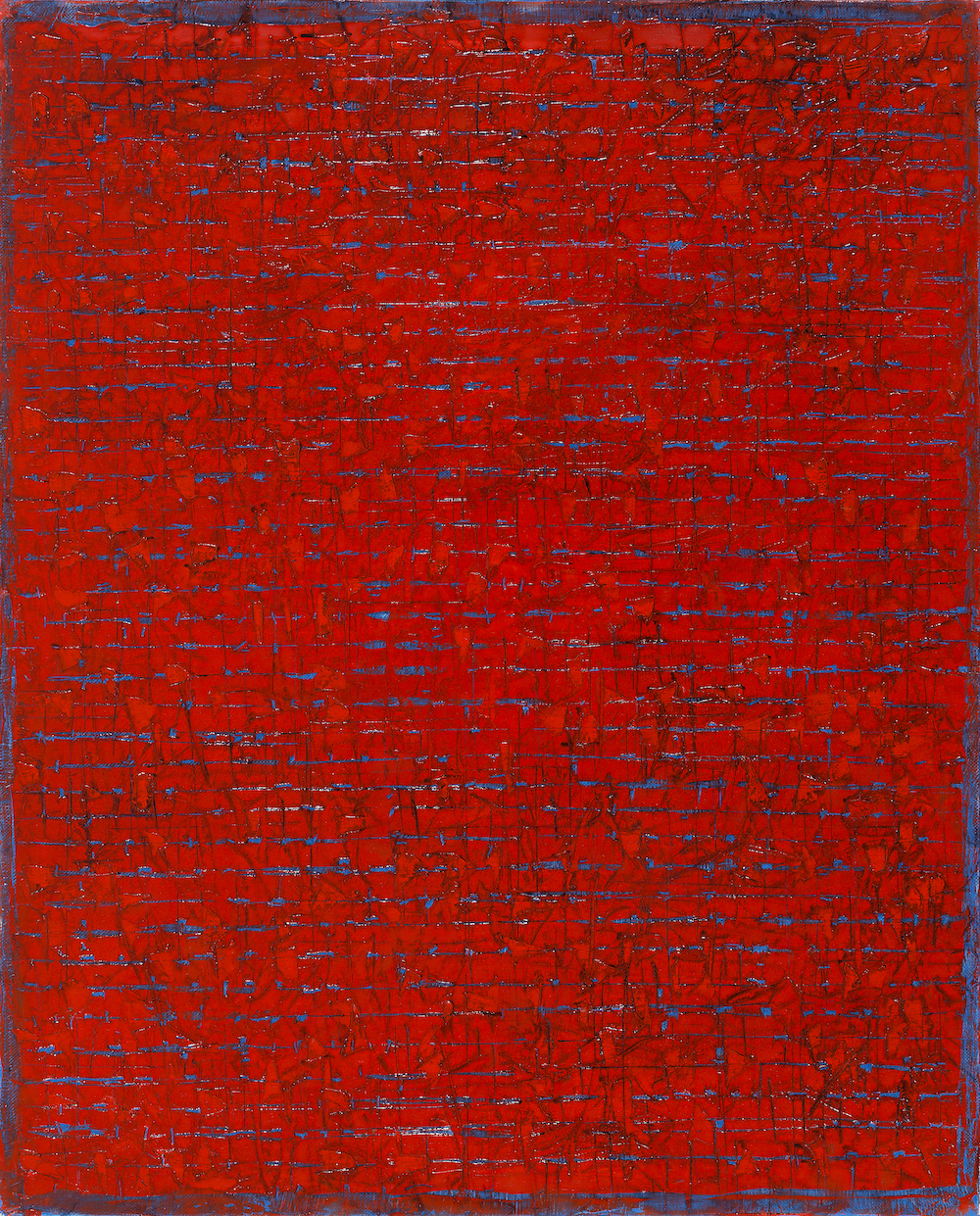
Levan Lagidze. Red field. 130x105 cm. Oil on canvas. 2018.
Since it has already been created by a creator, the composition mentioned by Stein seems to rest on the surface. However, it may also have happened that prior to this no one could perceive it apart from the creator. Unlike the viewers, before showing us the scene the creator travels a long and a difficult path, which continues even after having discovered the composition. Levan Lagidze's (ლევან ლაღიძე) labyrinths are as infinite as the history of painting. Here the possibilities are unlimited and the artist, who is loyal to his profession or worldview, proves this. At first glance everything is simple: he utilizes a canvas, a brush and oil paints, sits in front of an easel and tells the audience the same old story.
Over twenty years Lagidze has drawn abstractions by placing rectangular shapes or sections on rectangular canvases, in this way creating his distinctive handwriting that is familiar to everyone. However, he is not the one who discovered the rectangles or the squares. Neither is he the one who introduced geometric abstractions, the rhythmic repetition of forms, or the characteristic dissonance of an orderly rhythm. But in his hands, a combination of all these elements creates his unique and accurate language.
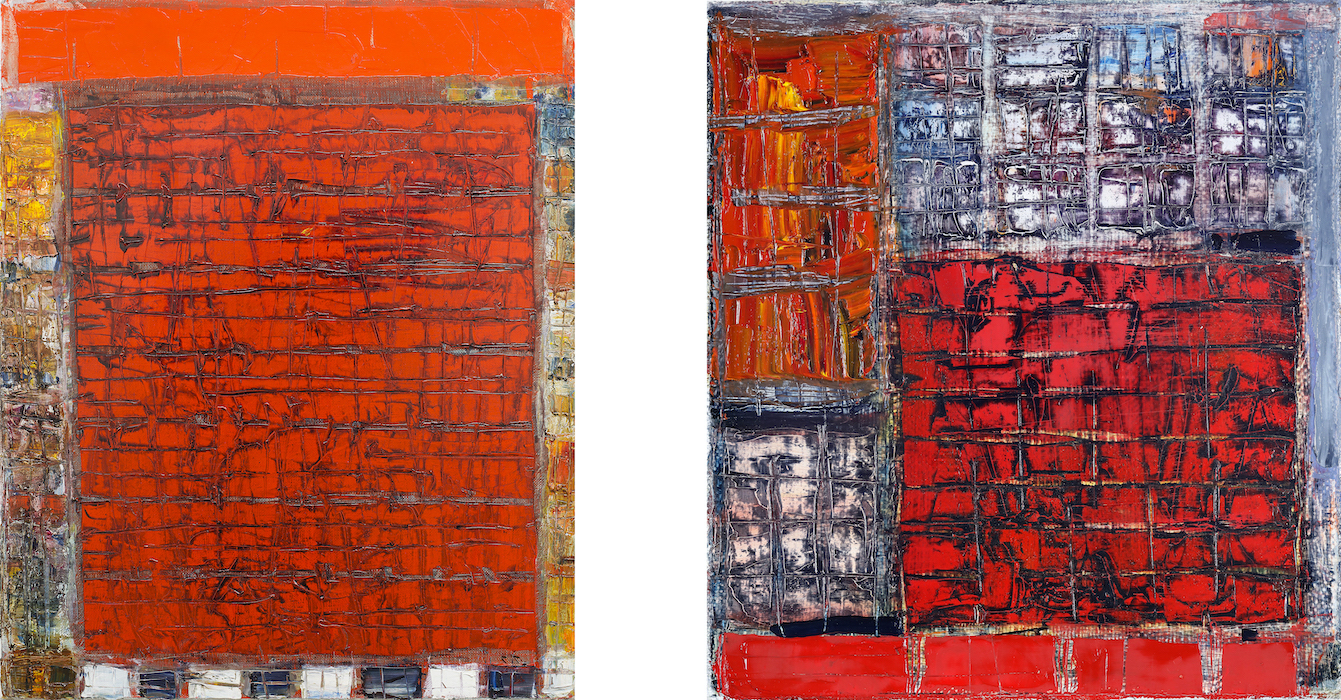
1. Levan Lagidze. Sunset. 73x60 cm. Oil on canvas. 2018.
2. Levan Lagidze. Composition. 35x32 cm. Oil on canvas. 2021.
This is not pure geometric abstraction either, because the expressionistic brush strokes are awarded an essential role in these compositions. One day it may happen, that the experts decide to study the layers of Lagidze's work, dig deeper into the surface of the canvas, and discover there an oil-covered field with orderly lines and a grid made on it using a palette-knife. Later this grid is covered with numerous strokes, layers, thoughts and emotions, whose logic of interaction is inexplicable. This is a location of clashes and battles that may also be perceived as a game. The surface once again restores its consonant or dissonant harmony and the surface, calm after the conflicts, begins to breathe again. This impression is reinforced by the "battles" taking place in the lower layers. On Lagidze’s canvases, the sublime nuances of the colored sections create the impression of movement.
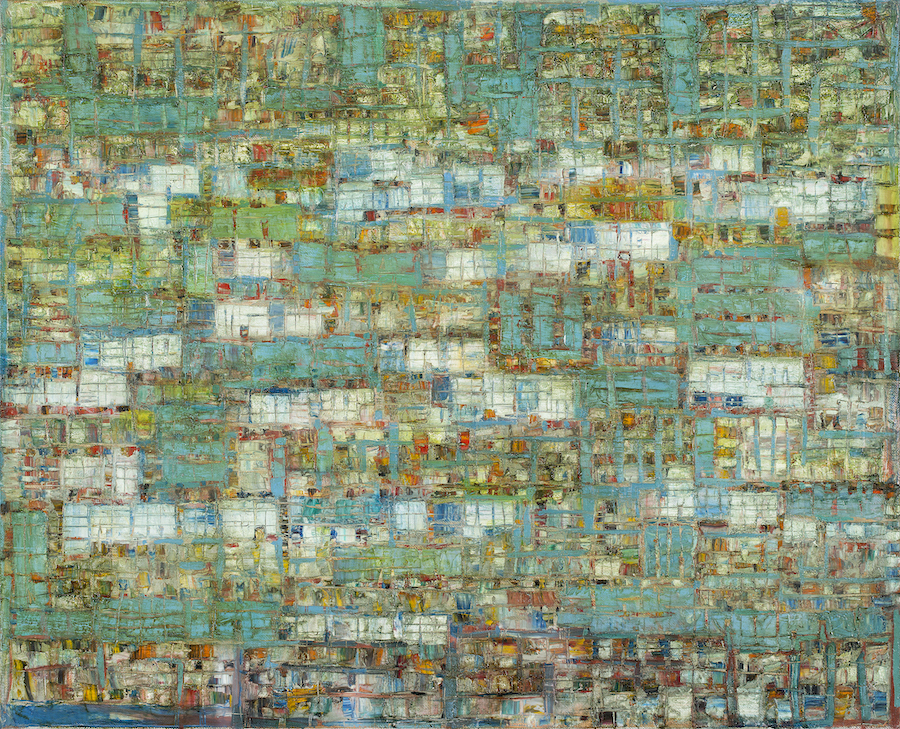
Levan Lagidze. Village in the mountains. 130x105 cm. Oil on canvas. 2018.
At first glance, we see a wall erected in front of us. Sometimes it looks as if it is constructed of mortared stone, but when you approach it you gradually begin to sink into it. There, beyond the blue, red, green, gray, or even between them, you discover many worlds and colors that shape the surface of the canvas. Down there, the painting conceals its richness and mysteries.
Davit Kakabadze (1889-1952) never traveled by plane, nevertheless he created landscapes of the aviation era. He portrayed natural rural landscapes through the "language of the city" – of the modernist age. Paul Klee (1879-1940) often created mystical abstractions on the theme of the city. In his works, Piet Mondrian (1872-1944) reflected the rhythms of a dynamic city without betraying his neoplasticism ideas. Lagidze wanders through the labyrinths of the city to paint his thoughts.
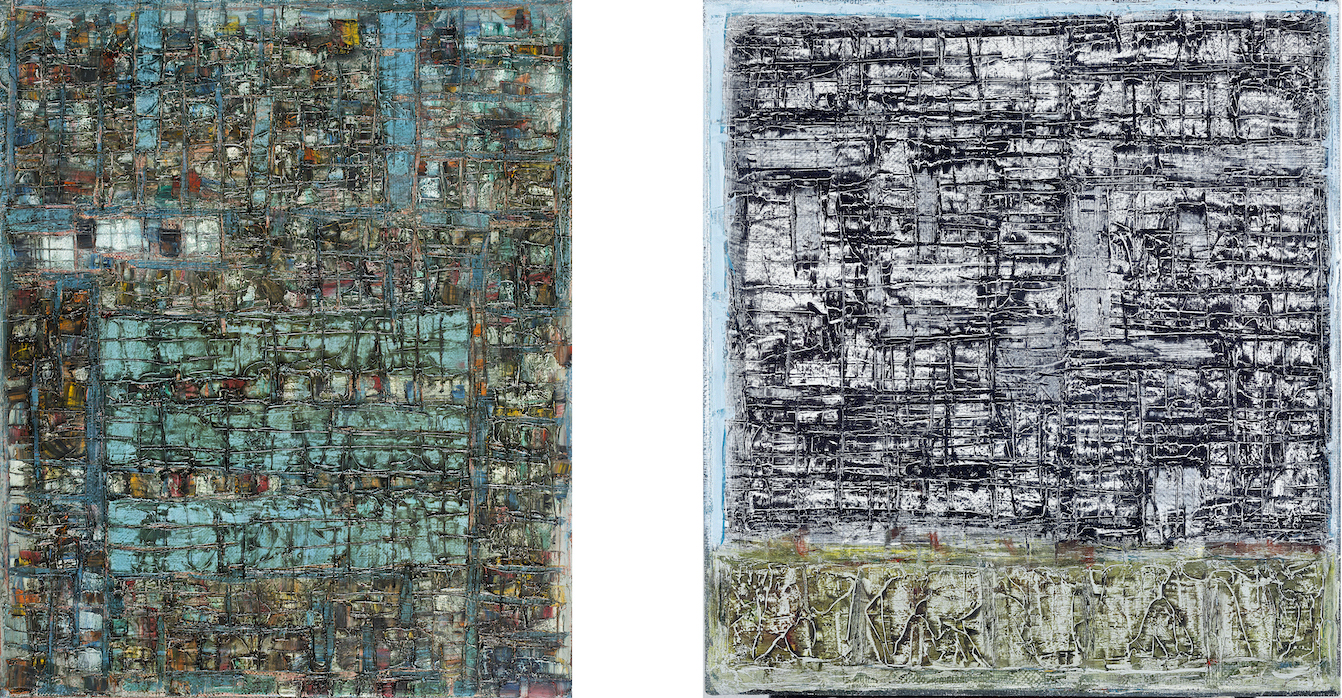
1. Levan Lagidze. Landscape. 73x60 cm. Oil on canvas. 2016.
2. Levan Lagidze. House. 35x32 cm. Oil on canvas. 2019.
And yet they all tell the same story, share the same foundation, and follow the same compositional order – the patterns of which can also be traced right back to the decorations adorning the ancient glazed tiles that covered the walls of Djoser’s Step Pyramid. No wonder everything is ruled by a desire to dig in search of the essence and resolve the composition of eternal regularities.
Levan Lagidze belongs to the generation of Georgian artists from the 1980s. In his early works, where the content of the image is clearly visible and even manifests in the title, we observe religious stories, portraits, and landscapes. Despite this clarity, it is still obvious that from the very beginning Lagidze’s way of thinking was focused on the abstract depiction of topics, and he was guided not by the narrative content, but the form of visual depiction of the image itself. On this path he found his own language. He found his own Macondo.

Levan Lagidze. The blue. 73x60 cm. Oil on canvas. 2017.
Levan Lagidze paints the imaginary city and its labyrinths. However, just as Macondo is based on its prototype Aracataca, Lagidze's cities originate from his native city. This is also confirmed by the fact that his early landscapes show houses suspended over the Mtkvari river in Tbilisi. Later they disappear and sink into a new geometric system with numerous brush strokes.
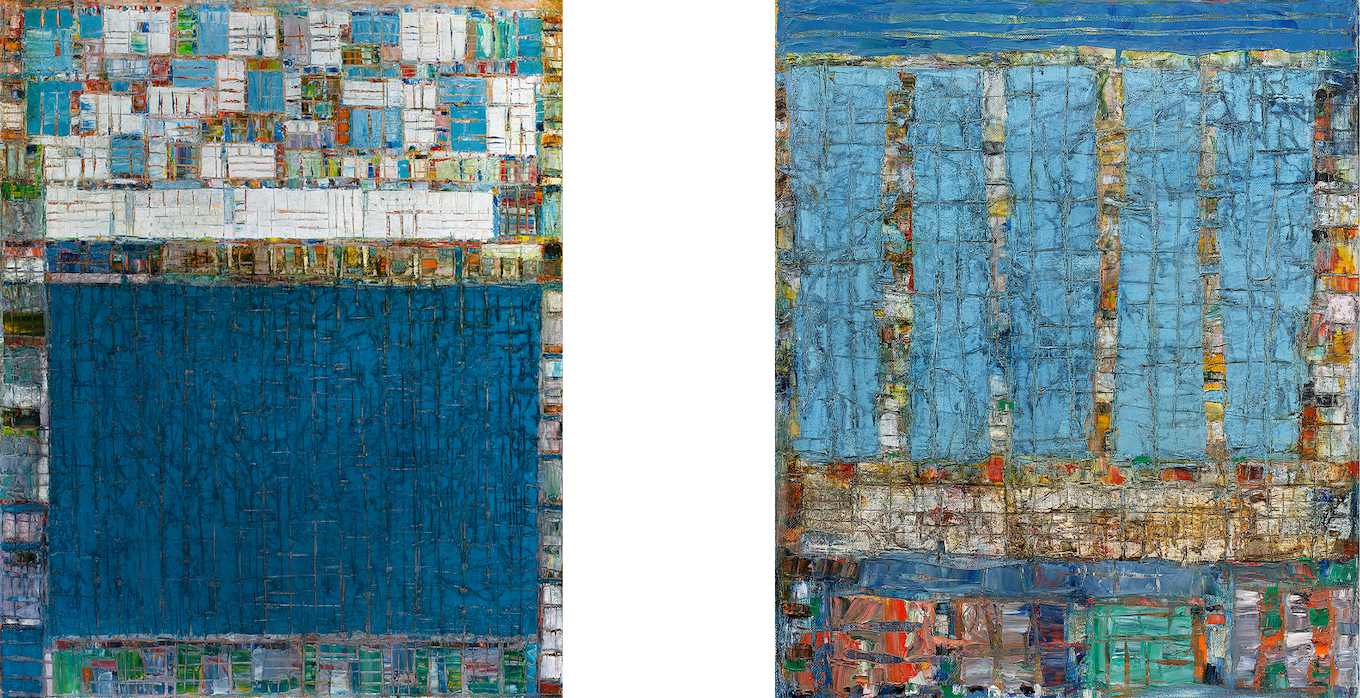
1. Levan Lagidze. Old city. 130x105 cm. Oil on canvas. 2020.
2. Levan Lagidze. Garden. 73x60 cm. Oil on canvas. 2017.
On the verge of the 21st century, Levan Lagidze abandoned his creative research and began painting contemporary abstract compositions that offer diversity both in terms of the “structure” of composition as well as the color. Each work is part of one large process. That is why, even despite being complete, when united on one surface these compositions form one entirety that is “ready” to become part of other compositions. The artist creates one vast labyrinth - a large composition that develops itself in all directions without being governed by a story, but rather a way of thinking that reflects the composition of the current, movement-loaded epoch.